The iPhone Gets 5G, but What’s It Like in Real-World Use?
Ever since 5G began rolling out where I live, in Minnesota’s Twin Cities, I’ve eagerly waited for the iPhone to support the next-generation cellular data technology.
In part, that’s because I’ve experienced eye-popping speeds on 5G-capable Android phones that have been shipping in the last year or so. One lovely summer 2019 day in downtown St. Paul’s Rice Park, I achieved download speeds of more than 2 gigabits per second, about twice the maximum throughput of wired home broadband in St. Paul. ¡Ea rayo! (That’s Puerto Rican for “holy crap!”)
As those who buy one of Apple’s 5G-compatible iPhone 12 models will discover, though, 5G in its current form is far from a passport into a science-fiction future of ubiquitous broadband-grade wireless access. Those crazy-fast downloads are not available everywhere, or really, much of anywhere.
What coverage you’ll find depends on your carrier—AT&T, T-Mobile, or Verizon in the US—and where you live. The vast majority of 5G users across the country will not see eye-popping 5G speeds on par with what I experienced in Rice Park, and many will have no 5G access at all even if they have 5G phones.
So, while I had a blast recently testing T-Mobile and Verizon 5G on an iPhone 12 and an iPhone 12 Pro, I came to realize how far we are from ubiquitous 5G coverage.
A Three-Layer Cake
Making sense of 5G takes a bit of effort because it is not one technology, but a hodge-podge of wireless frequencies. My TidBITS compadre Glenn Fleishman goes into quite a bit of detail about 5G complexities and implications (see “Understanding 5G, and Why It’s the Future (Not Present) for Mobile Communications,” 11 November 2020).
But, for this article, I’m focusing on how 5G breaks into three broad categories:
- High band: This is the fastest of the 5G wireless frequencies—the one I was tapping during my St. Paul speed test—but also the most limited in range and coverage. It’s meant to be used mostly outdoors since it’s easily foiled by walls and other obstructions. It’s available in extremely limited urban areas.
- Middle band: This is a good compromise option with higher speeds than the low band provides and far greater (though still mostly urban) coverage than the high band offers. And, like the low band, it works indoors or outdoors. It is possible that the middle band will someday be what most users equate with 5G.
- Low band: This wireless frequency has the widest coverage by far, blanketing much of the country (including rural areas). However, its speeds are much slower than the high band—often on par with or slightly faster than 4G LTE. Unlike the high band, the low band works just fine indoors as well as outdoors.
T-Mobile provides an apt analogy in the form of a three-layer cake that illustrates the proportional availability of its high-band, middle-band, and low-band service in the United States.
AT&T, T-Mobile, and Verizon all provide low-band service across much of the country. All three also offer high-band service, known as millimeter-wave or mmWave, but just in nooks and crannies of particular cities. Middle-band service is currently a T-Mobile exclusive in this country, courtesy of its recent merger with Sprint, but its rivals are reportedly snapping up spectrum for their own middle-band offerings down the road.
5G also has been confusing on the hardware front, with not every Android phone supporting every flavor of 5G. The new iPhone models, however, will work across the entirety of the 5G spectrum. They’re fully compatible with the 5G flavors offered by AT&T, T-Mobile, and Verizon, along with companies such as Comcast that rebrand 5G service from one of the big three carriers.
With T-Mobile and Verizon 5G SIM cards plugged into loaner iPhone 12 and iPhone 12 Pro devices, I set out on my most extensive and exciting 5G adventure to date.
Verizon’s High Band
With Verizon, I focused on the high band—what the carrier calls Ultra Wideband—since it’s the only carrier to offer mmWave service in my area. To my chagrin, the service footprint has not expanded a great deal in St. Paul since I sampled it a year or so ago. So much for Verizon’s promise to expand its Ultra Wideband coverage aggressively.
On the map below, dark red sections represent slivers of coverage across downtown St. Paul, southwest along the West Seventh Street commercial drag, and in a couple of pockets to the southeast across the Mississippi River. Interestingly, those pockets include the area around the building where my St. Paul Pioneer Press employer is based, possibly because we share the premises with Comcast and its Verizon-derived Xfinity Wireless. Lucky us!
Verizon’s high-band network is more built out to the west in Minneapolis. But, again, it is mostly centered on that city’s downtown, along with scattered portions of surrounding neighborhoods. In other words, the vast majority of residents and businesses across the Twin Cities metro area (including suburbs) have no mmWave access.
As of mid-October, Verizon offered mmWave coverage in 55 cities, including an announcement of 19 new cities timed to coincide with Apple’s iPhone 12 press event (see “The iPhone 12: Here’s What You Need to Know,” 13 October 2020). The company aims to have Ultra Wideband in 60 cities by year’s end, along with low-band service that, as of mid-October, served 200 million people in 1800 US cities.
But Ultra Wideband, though often ultrafast, has a few gotchas. Verizon makes it clear that the service is intended to be used mostly outdoors since it can’t penetrate walls. In fact, it is easily disrupted by anything physical—such as tree leaves or torrential rain—that impedes line of sight with one of the 5G mini-antennas densely deployed in urban areas, typically on light poles and the like.
While testing Verizon’s Ultra Wideband, I got the best results when near (and with a clear view of) the above antenna array on a light pole near Rice Park. I never was able to duplicate those earlier 2 Gbps downloads, but I got close, with around 1.7 Gbps.
Elsewhere downtown, I mostly saw slower downloads, though they were still in the hundreds of megabits per second.
And, as I wandered downtown, I found it tricky to find an mmWave signal even while trying to stay within the Ultra-Wideband portions on the coverage map. The tip-off is the “UW” badge that pops up beside “5G” on the upper right of the iPhone screen when it detects an mmWave signal. But those letters would maddeningly wink on and off on my iPhone 12 as I twirled around and took steps in various directions in often-vain attempts to lock in. I must have looked like a crazy person practicing dance moves.
I got great service in places where it wouldn’t seem to be of much use, such as on the Robert Street Bridge linking downtown to southeastern sections of St. Paul. Yet, just across the bridge, strolling the grounds of 10 River Park Plaza where Comcast and my employer have their digs, I struggled to connect. (So much for that lucky location.)
In any case, my speed tests never approached the 4 Gbps peak download speeds Verizon CEO Hans Vestberg bragged about while on stage with Tim Cook.
Given my difficulties when trying to find Ultra Wideband coverage, I’d hate to depend on it. But, when I was able to use mmWave, I did often feel like I was in the future. I once lived in downtown St. Paul in a high-rise condominium with a balcony that, based on a check of the coverage map, would seem to allow the current condo residents to tap into Verizon’s Ultra Wideband while enjoying the amazing view. I almost regret moving.
Verizon 5G is unremarkable for those outside an Ultra-Wideband footprint. The carrier doesn’t promise performance that is much faster than 4G LTE. In my testing, I saw its low-band downloads hover around 50 Mbps—roughly on par with 4G LTE from my regular AT&T service on an iPhone 11 Pro.
T-Mobile’s Middle Band
That is what makes T-Mobile’s 5G strategy so appealing. Like Verizon, it has blazingly fast mmWave service. As of this writing, it can be found in pockets of seven cities—Atlanta, Cleveland, Dallas, Las Vegas, Los Angeles, Miami, and New York City.
But millions of T-Mobile customers who are not in one of those tiny mmWave footprints have the next best thing, middle-band service. It’s slower than mmWave but still plenty fast compared to low-band service.
As of 28 October 2020, T-Mobile’s middle-band service was available in 410 cities and towns across the country and is slated to cover 100 million people by the end of the year. For context, T-Mobile’s low-band network covers 260 million people across 7500 cities and towns.
As with Verizon, I tested T-Mobile’s service while roaming downtown St. Paul. I didn’t need to squint at a coverage map, though, since middle-band service is more broadly available (displayed on the map below as a magenta ocean, with isolated darker pockets denoting slower 4G LTE service).
As with Verizon’s mmWave, though, my speed tests were highly variable. I got the best results while standing outside Xcel Energy Center (home of the mighty Minnesota Wild hockey team). Consistent speeds in the mid-hundreds of megabits per second are not too shabby.
But elsewhere, like in my home office, middle-band service wasn’t stunning. I’d get downloads of 100 megabits per second or so, which is a huge slowdown. Nevertheless, it’s about twice what I’d get with 4G LTE and about what I see with my Comcast Xfinity home broadband service, so I guess I should not gripe.
Speed variability is related to signal strength. Though T-Mobile’s St. Paul coverage map is a uniform shade of magenta, clicking around the Web interface shows signal quality ranging from “excellent” to “limited” in various spots. In fact, T-Mobile guarantees dependable middle-band coverage in only a handful of municipalities other than St. Paul and Minneapolis, but the carrier said its coverage in the Twin Cities and elsewhere is rapidly expanding.
Even with these limitations, I found T-Mobile’s service to be hugely appealing. While Verizon’s Ultra Wideband borders on the useless because of its minuscule St. Paul footprint, T-Mobile’s middle-band service is exponentially more practical since I can tap into it around St. Paul and some of its surroundings.
But What’s It Good For?
I have heard lots of pie-in-the-sky talk about what 5G will be used for in the coming years. Glenn’s article lists such “purported potential uses of 5G” made possible by the technology’s higher speed and lower latency, including augmented reality, high-performance video games, vast sensor networks, and remotely controlled medical procedures, autonomous vehicles, and industrial robots.
Although I’m sure some of these 5G predictions will come to pass, I can’t help rolling my eyes because I have heard much such fanciful talk related to past technological advances in my decades as a technology journalist.
However, I have already alluded to an obvious 5G use: home broadband service. With such speedy connections, wouldn’t it make sense to roll out some kind of 5G residential broadband service?
As it happens, Verizon has done exactly that. Its 5G Home service taps into Ultra Wideband to compete, at least within its limited geographic availability, with traditional broadband options like Comcast Xfinity and CenturyLink Fiber. 5G Home is available in eight US cities—including Minneapolis and St. Paul—with two more cities reportedly coming online by the end of the year.
5G Home costs $50 per month for those with certain kinds of Verizon cellular-wireless plans and $70 per month for others—with no data caps in either instance.
To go around mmWave’s difficulty with physical obstructions, Verizon positions antennas either outside a home or indoors attached to a window; Verizon assures me that the 5G signal penetrates some kinds of glass just fine.
This means, if I still lived in my condo, Verizon could be my broadband provider. If so, I am a bit envious of whoever resides there now since the wireless service would be up to twice as fast as any wired residential broadband service available here.
So what about a T-Mobile broadband option using middle-band service? T-Mobile tells me that is in the works. The carrier does provide 4G LTE-based home Internet in certain, largely isolated parts of the country. So, for that matter, do AT&T and Verizon. But T-Mobile middle-band home broadband would be an improvement, assuming its performance matches what I experienced.
So Is a 5G iPhone Worth It?
All this raises the obvious question: Should you upgrade to one of the iPhone 12 models for 5G alone? (There are lots of other reasons to upgrade, but we’ll sidestep those for now.)
If you use AT&T or Verizon, perhaps not. With nationwide service mostly of the low-band nature, the speed benefits over 4G LTE are incremental at best.
T-Mobile customers interested in faster service should give an iPhone upgrade more thought. Its speedy middle-band service can be found in lots of places, though it’s not as common as the company’s low-band service. If you are in such a middle-band service area, the purchase of a new iPhone gets you a decent, consistent speed boost. T-Mobile does not charge extra for it, either.
You should also check whether you live or work in or near one of the places where one of the carriers provides blazingly fast high-band service. This includes the 36 cities where AT&T has such connectivity. But, again, keep in mind that the service works only in small portions of such cities, so study coverage maps carefully to see whether such mmWave pockets are relevant and useful to you.
In the end, few people will buy a new iPhone for its 5G capabilities. What’s important is that upgrading will future-proof yourself for the near future, when decent 5G speeds become more widely available from all the carriers.
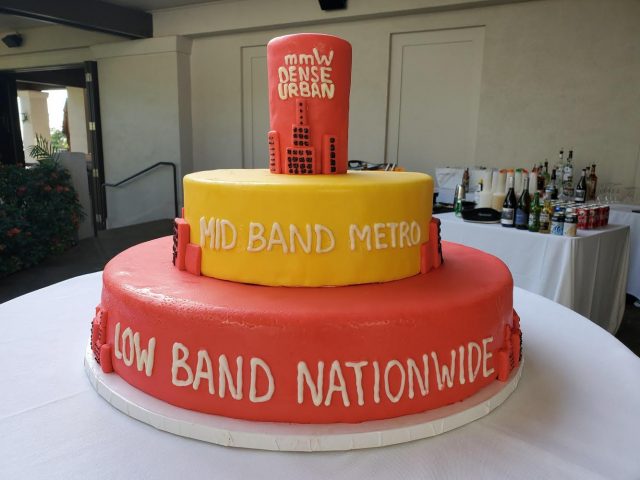
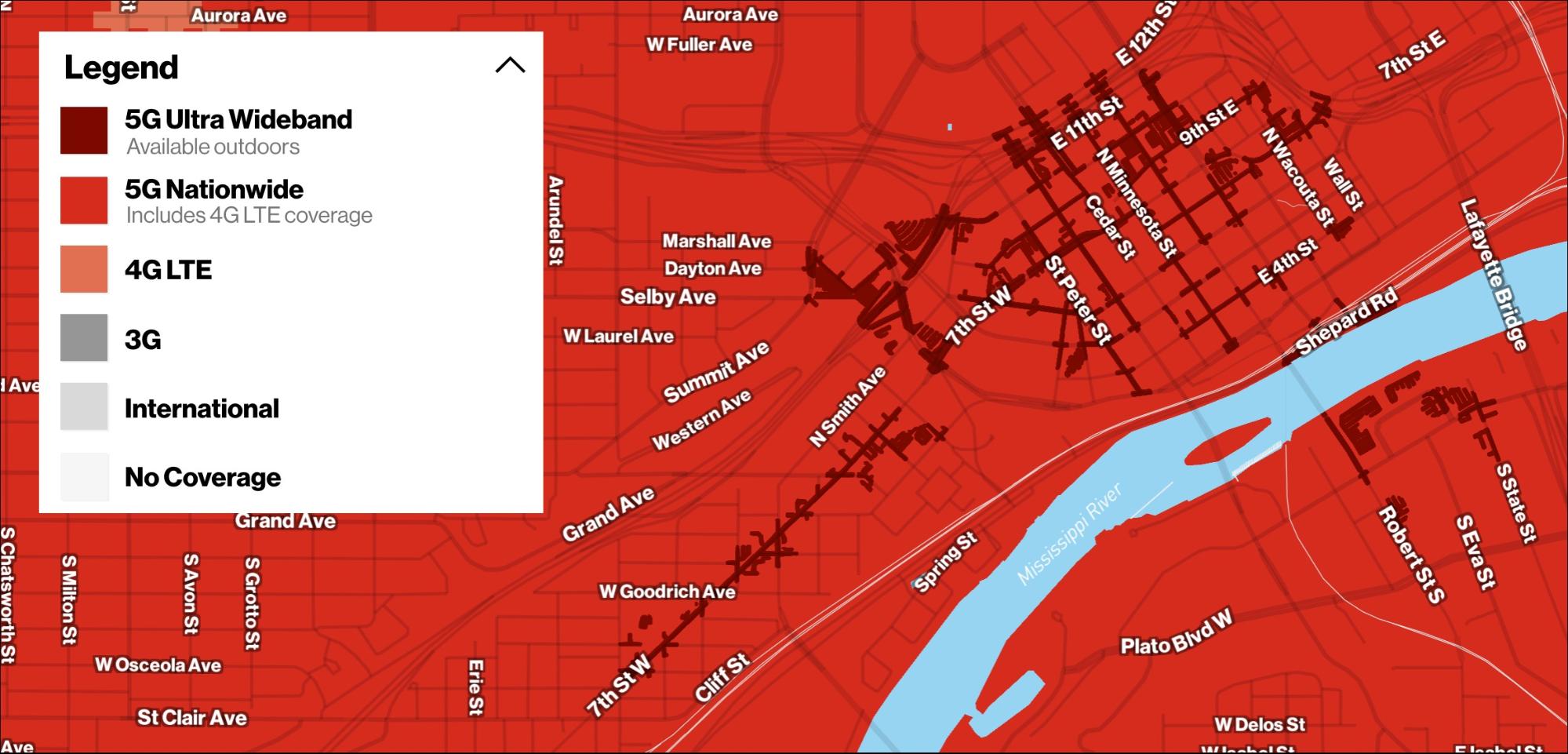
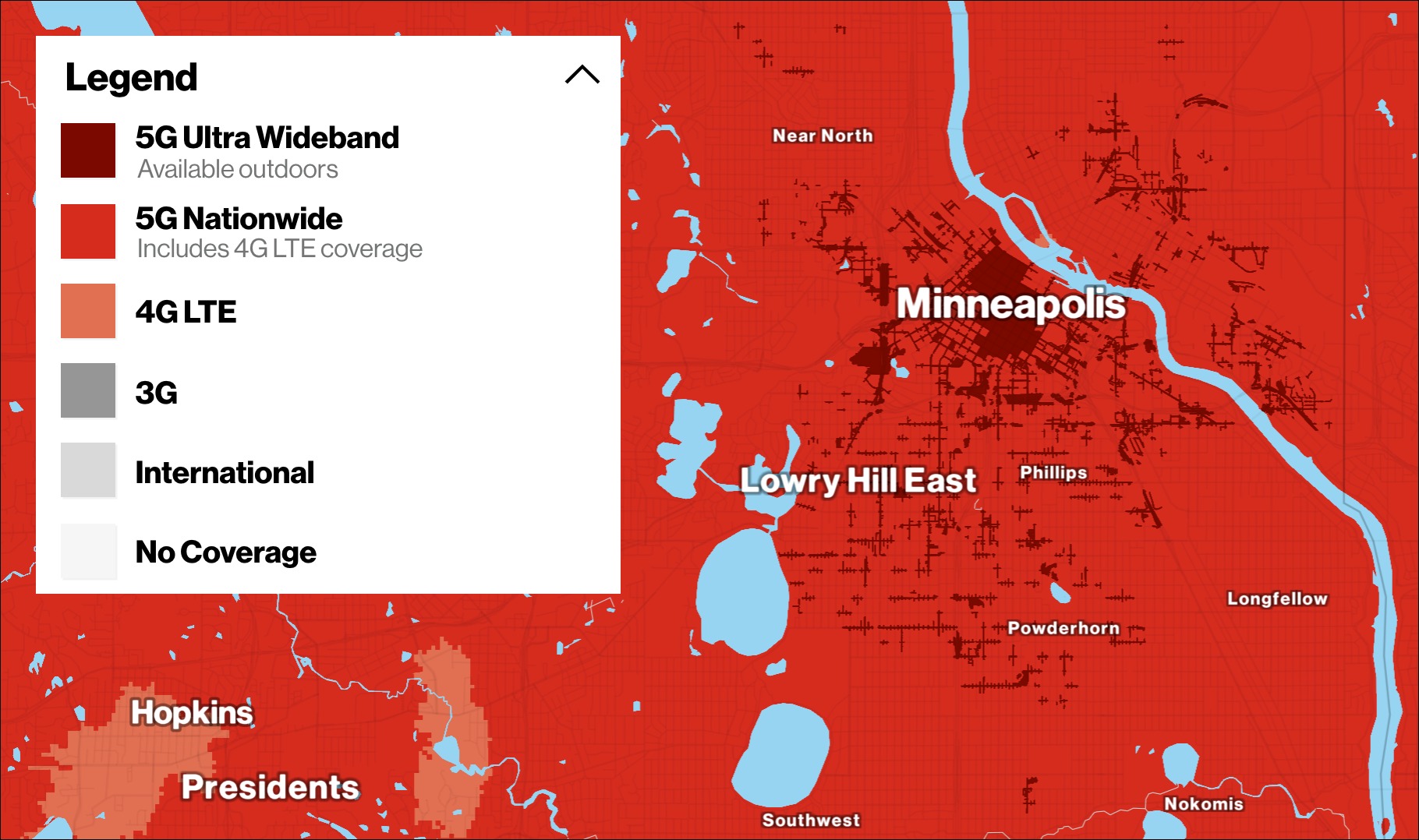
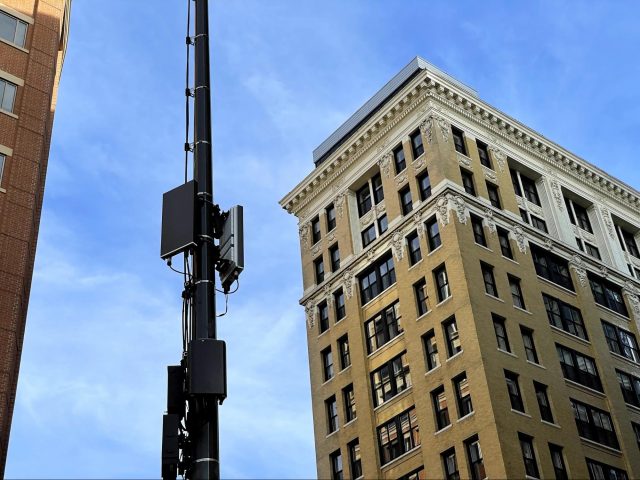
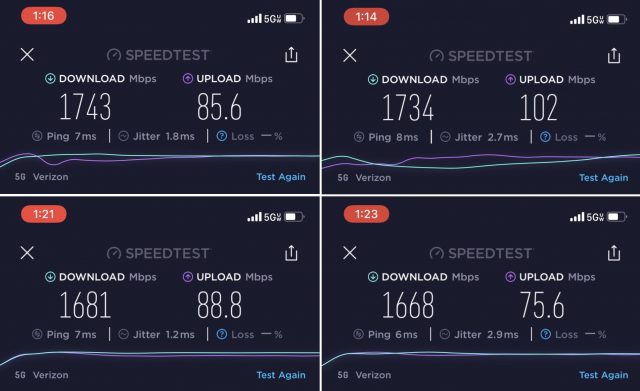
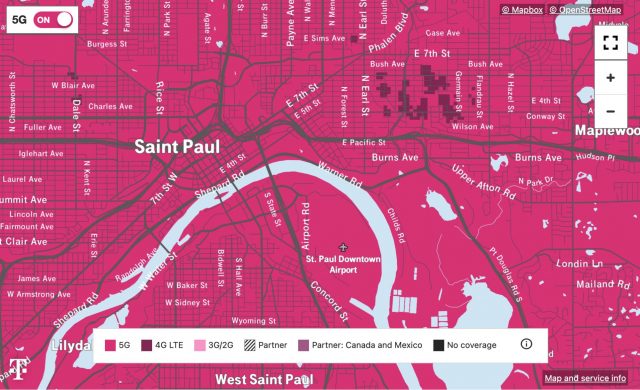
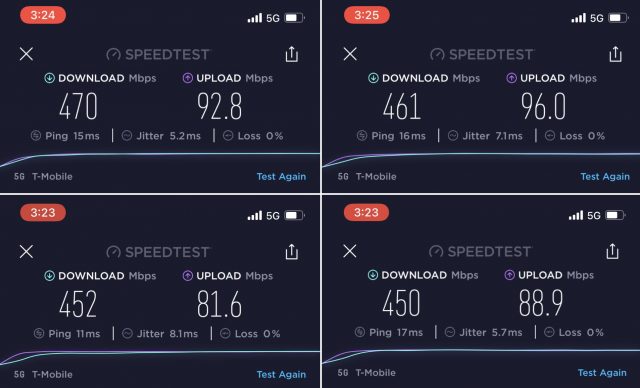
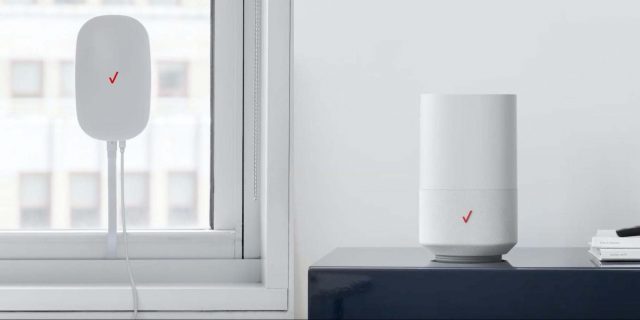
What’s very interesting is what T-Mobile is rolling out. They have a T-Mobile Home service which offers 50mbps to 100mbps download for $50 per month. That’s $30 cheaper than my cable.
I think we’re finally seeing the end of the Internet cable monopoly.
@julio, I suspect this is a typo and should be Mbps.
I tried out 5G on T-Mobile around my home and campus here in Berkeley. I did nothing else than switch between force LTE and force 5G since I wasn’t sure Apple’s smart 5G switching would always kick in as soon as I launch a quick benchmark. To my big surprise I never saw any difference between the two. The best I saw on that day (Sat right after lunch) was about 20 Mbps and both LTE and 5G delivered that same speed in that location.
I’m not too worried about the speed being low because I don’t stream 4k video to my 12 mini. And I wasn’t expecting hundreds of Mbps because I know around here T-Mobile is all sub-6 GHz so no mm wave. But still, considering all the time Tim spent on 5G together with his new Swedish best friend, I would have hoped 5G midband would at least show some improvement over LTE. Oh well, it will only get better with time. Maybe I should travel to Minnesota one day to experience mm wave speeds. On second thought, nah, too cold. ;)
Fixed. Good catch. Thanks.
Thank you for a nice article.
I have the 12 Pro Max and T-Mobile. I didn’t expect to see 5G for months - but to my surprise, I get 5G on my morning walk consistently in my neighborhood of Summerlin Centre (Las Vegas). I haven’t done any benchmarks but it seems to perform just like LTE. Summerlin has a reputation as having very poor cell coverage so this was a pleasant surprise.
David
A typo, or looking to the future?
Thanks for the article. It confirms that the primary reason for me to buy a 12 mini now would be to get one before Apple discontinues that nice-sized phone, and that’s good information.
Definitely a typo—thanks! When you start comparing throwing around Mbps and Gbps in an article, it’s all too easy to glaze over slightly and focus on the number rather than on the units. Fixed.
T-Mobile hasn’t implemented its mid-band (2.5Ghz) midband 5G in Berkeley yet. You might see 5G on the 600Mhz band which is almost nationwide, but it’s not much faster than 4G/LTE. Their midband is only in about 400 cities.
It’s widely deployed in Northern NJ and I’m waiting for it to get to my area.
I live on Olympic Peninsula of Washington state with T-Mobile as my provider. I can get 5G if I go out on my deck and stand in just the right spot. When I find the sweet spot I’ve seen speeds as high as 65 mbs. In the house 5G is nonexistent with LTE speeds of 15 mps. My home wireless has consistently been over 250 mps through Wave. So, for the time being T-Mobile will not be my internet provider. That being said, I am happy with my iPhone 12 pro.
There’s no need to rush to upgrade to “future-proof yourself.” If 5G is what you want, upgrade when it becomes available in your area. When that time arrives you might find yourself getting an iPhone 13, 14, 15, … who knows what version. You can be sure that all future iPhones will have 5G—until 6G comes along.
T-Mobile has a nationwide 600Mhz 5G network. That network isn’t any faster than the 600Mhz 4G network and doesn’t drain the battery. If you see you’re in a 5G network that’s not that fast, that’s the one you’re using.
However, T-Mobile has a 2.5Ghz midband network they’re also deploying. This network will reach speeds of up to 300mbps to 400mbps. I haven’t seen a map of this network. There are a few webpages that list cities where deployed, and I see it around where I live. I see T-Mobile’s midband 5G is now in the LA area. I don’t think it’s in the Bay Area right now.